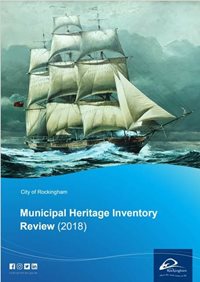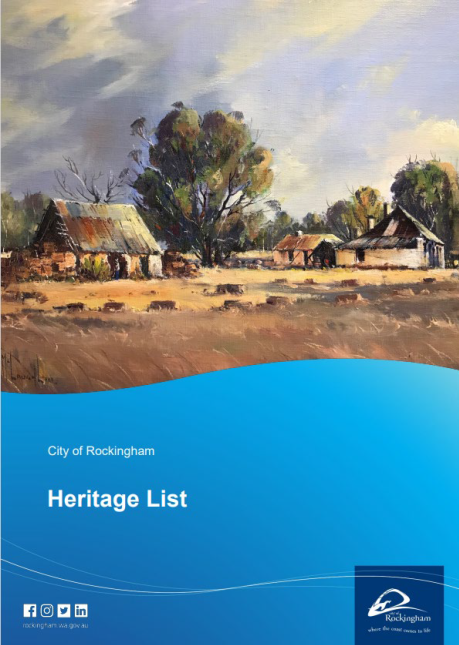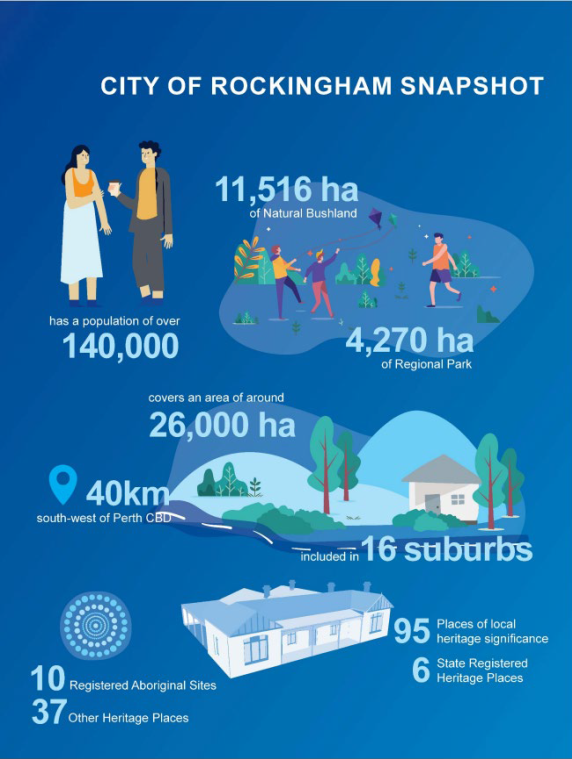What is Heritage?
Our heritage is part of who we are. It's what we inherit, appreciate today and think it is important to protect and pass on to future generations. Heritage can be something that you can see and feel, like buildings and objects, or something that is a story, and can be abstract like traditions and beliefs. We appreciate heritage just by knowing that it exists.
What is a Local Heritage Review?
 The City’s Local Heritage Places are recorded in the Municipal Heritage Inventory (MHI) which is now known as a Heritage Survey. The current MHI includes a list of places and structures which, in the opinion of Council are, or may become, of cultural heritage significance. It is a central publicly accessible record and recognises places of cultural heritage importance to the local community.
The City’s Local Heritage Places are recorded in the Municipal Heritage Inventory (MHI) which is now known as a Heritage Survey. The current MHI includes a list of places and structures which, in the opinion of Council are, or may become, of cultural heritage significance. It is a central publicly accessible record and recognises places of cultural heritage importance to the local community.
All local governments in Western Australia are required by the Heritage Act 2018 to create and maintain a Local Heritage Survey of places or structure that either presently hold or could potentially acquire local cultural heritage significance. The City's MHI was first adopted in 1995 and has been regularly updated with the current version being 2018.
One of the major changes from the MHI is that a Local Heritage Survey provides more flexibility to local government to include places of cultural significance, as opposed to just buildings or structures. The definition of "place" can refer to things that are in, on or over land, including for instance, a tree or group of trees or land under water.
What is a Heritage List?
 opens in a new windowThe Heritage Survey provides the basis for the City’s Heritage List which identifies places of particular importance.
opens in a new windowThe Heritage Survey provides the basis for the City’s Heritage List which identifies places of particular importance.
The Heritage List identifies places that are of cultural heritage significance and worthy of built heritage conservation, so that development can, as far as possible, be consistent with the City of Rockingham heritage conservation values and objectives.
Inclusion of a place in a Heritage List does not limit the ability of a property owner to propose any works or other development, nor does it expect or require the City to determine an application solely on heritage grounds. Proposals, however, that respect and retain the heritage values of a place are likely to be encouraged and may, where appropriate, be required.
The Threshold for inclusion in the Heritage List is guided by the City’s Local Planning Policy No.3.3.26 Guidelines to Establishing a Heritage List.
What is the City’s Heritage Strategy 2020-2025?
The City’s Heritage Strategy 2020-2025 sets the future direction for heritage management in the City. There are no changes proposed to the actions under the City’s Heritage Strategy 2020-2025.
How can the community participate?
This is an opportunity to share your stories, old photos, and memories of the City of Rockingham.
We have notified our local community through social media and sought feedback by 29 February 2024.
While nominations for new places have closed, we still welcome late submissions. If possible, these will be considered in the current Heritage review if there is time, or nominations will be held over for the next review or update if time does not permit.
What guides the Heritage Review?
The City’s Heritage review is guided by the Guidelines for Local Heritage Surveys 2022, prepared by the Heritage Council of Western Australia. The City as engaged Stephen Carrick Architects (SCA) to undertake the Heritage Survey and Heritage List Review. SCA are experienced heritage professionals, and have prepared various Local Heritage Surveys and Heritage Lists for other local governments.
